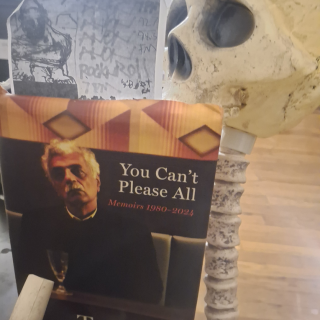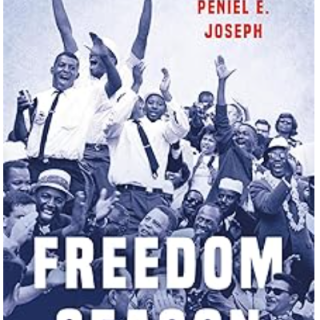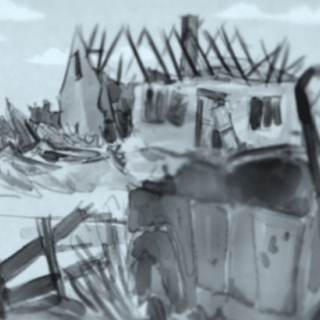My late mother’s only brother, Willie D. Grandy–she and her sisters fondly called him WD or Broboy–fought in World II. My mother on occasion talked about missing him while he was away, and how they often didn’t know where he was. I never heard him talk about the war, and it never occurred to me to ask about it. Because of that missed opportunity, I was delighted when a dear friend recommended Half American, which offers a long overdue correction of the narrative of the so-called “Good War” by focusing on the crucial roles played by black Americans at home and abroad.
We have to remember when America entered World War II after the bombing of Pearl Harbor in 1941, it was still a highly segregated society, and not just in the south. While the demeaning, ubiquitous signage was not nearly as prominent outside the south and white-on-black violence was not as common or vicious, northern de facto segregation was ever present. Neighborhoods saw a rigid color line and in large urban cities, and whites kept blacks from accessing recreational facilities and housing, using tactics such as block busting redlining, and violence. Northern schools were segregated, poorly funded, and the buildings themselves often of inferior quality and overcrowded.
In the aftermath of the attack on Pearl Harbor, African Americans–as they have for every war fought by the United States–rushed to volunteer their services. And just as they had during every previous war, they were hopeful that this would be the war during which America would recognize Blacks as human beings deserving all the rights and privileges of American citizens. But as it had been in past wars, they were refused the opportunity to enlist. When of necessity black men began to be drafted, the Army placed them in the lowest, most dangerous positions, denied them equal pay, and severely punished them for the tiniest infractions. The Army Air Corps refused them the opportunity to learn to fly. The Navy only accepted black men as cooks and mess attendants, and the Marines didn’t accept them at all. It is supremely ironic that black people–whose unpaid labor helped make America–were the only group who had to plead for the privilege of being killed to defend this country.
As factories ramped up twenty-four seven to support the war effort, Blacks were denied good paying factory jobs. The situation was so dire that A. Philip Randolph, a black labor leader who headed up the Brotherhood of Sleeping Car Porters and Maids, met with President Franklin D. Roosevelt and threatened that the black community would march on Washington to protest the discrimination they found in the war industries. FDR was so alarmed at Randolph’s threat that he signed Executive Order 8802, barring such discrimination. Although the order was unevenly applied and rarely enforced, especially in the south, it was very important.
During the war, black men and women who were enlisted in the armed forces made history. The most well-known are the Tuskegee Airman, a group of black bomber and fighter pilots and their attendant support group of bombardiers, instructors, mechanics and such formed the 332d Fighter Group and the 477th Bombardment Group. While they did not see action until 1943 when they were deployed to Sicily and North Africa , they more than admirably acquitted themselves in service, and some were even taken as prisoners of war. (Although it is often reported that they never lost a bomber they escorted, that is incorrect.) The group was awarded three Distinguished Unit Citations. The USS Mason (DE-529) was a destroyer escort and one of two U. S. Navy ships primarily made up of a mostly African-American crew. Finally, the 6888 Central Postal Directory Battalion, nicknamed the "Six Triple Eight," was a self sufficient, predominantly black, female battalion of the Women's Army Corps (WAC). They were sent to Europe in 1944 and charged with streamlining the delivery of mail to American troops. Their motto was "No mail, low morale, " and when they arrived they were met with a years-long backlog of about seventeen million pieces of it. It was estimated that their job would take six months; they cleared the backlog in half that time.
Half American is a book that the far right would surely label as critical race theory (CRT) and thus ban. It is unabashedly up-front in its mission to highlight the systemic racism that kept African Americans from full equality in the military. Delmont tells us that blacks were not only fighting fascism abroad as practiced by Adolf Hitler–indeed, Hitler is said to have modeled his racist techniques on southern Jim Crow–but racism at home as practiced by American Jim Crow. Black America was aiming for what came to be called the Double V: victory against fascism abroad and racism at home.
Half American is highly engaging and fast paced and it is devoid of academic and military jargon. I found it such a compelling read, I had to force myself to put it away at bed time. Delmont shows that were it not for the participation of African Americans, the war might have dragged on longer than it did and the Allies might not have triumphed.



